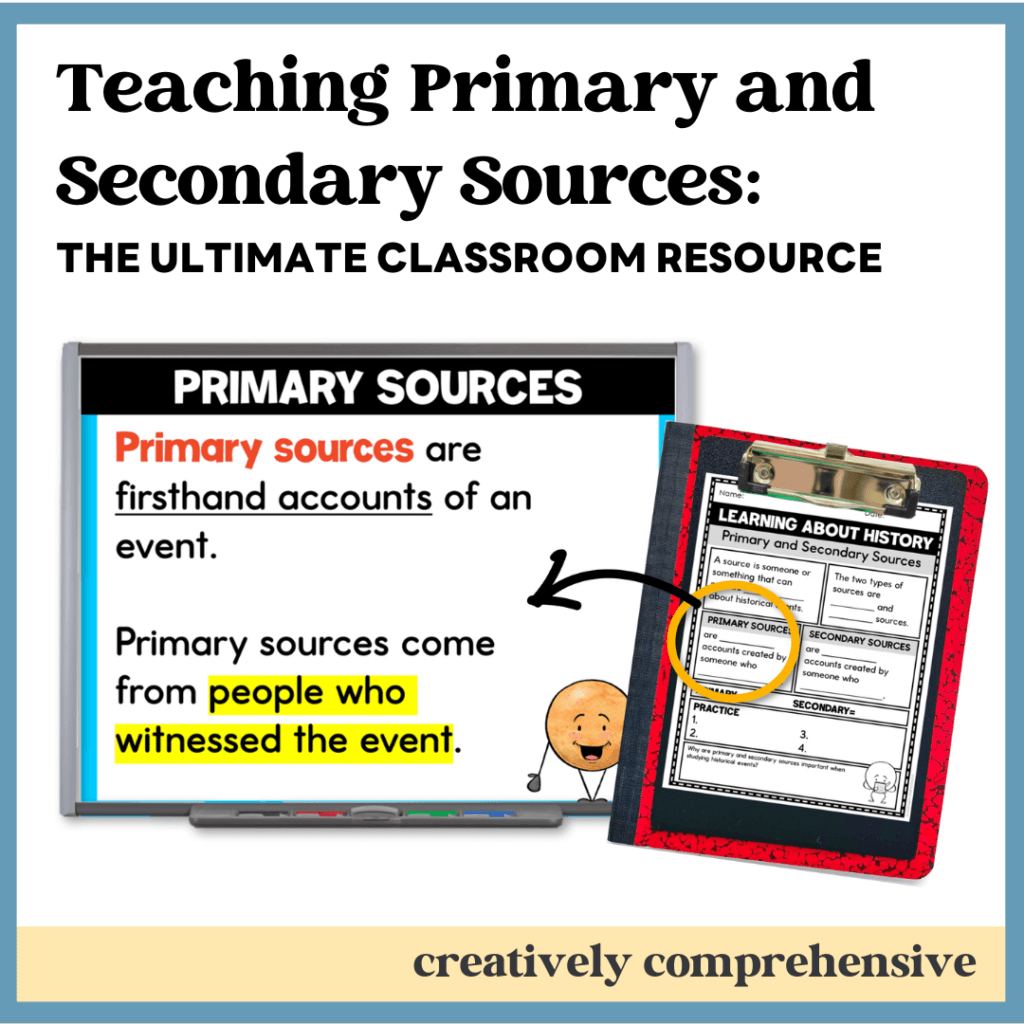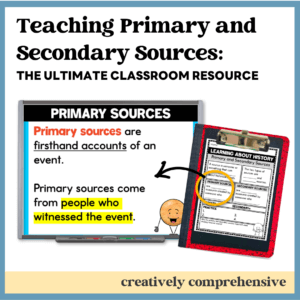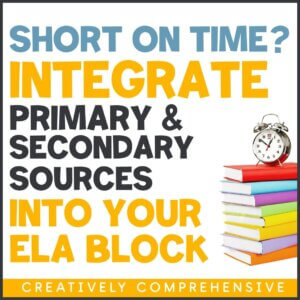by Marianna Monheim – updated January 27, 2025
Make a Challenging Subject Easier to Understand
Navigating the concepts of primary and secondary sources can be challenging for young learners, but it’s also one of the most critical skills students need to understand history. If you’ve struggled to make these ideas engaging and easy to grasp, this Primary and Secondary Sources Activities Unit is here to save the day. Designed specifically for grades 3-5, it breaks down complex ideas into manageable, fun, and interactive lessons that truly resonate with students.
With ready-to-use materials and hands-on projects, , this resource is a game changer that helps teachers approach teaching primary and secondary sources in a way that makes sense. Whether your goal is to meet social studies standards or encourage thoughtful fact-checking, this unit makes it easy to do both.
Table of Contents
Why Does This Unit Stand Out?
Let’s back up for a second and talk about why I created this particular resource. A few years back I was prepping to teach this concept to my group of fourth graders, when lo and behold I found…one paragraph in their textbook.
You read that correctly. One paragraph.
Nevermind the fact that students can’t fully grasp the material in the rest of the book without clearly understanding the difference between and purpose of primary and secondary sources.
So: I sat at my computer and got to work. Not only did I consult available standards, I thought about:
- What do students need to know in order to conduct their own historical inquiries?
- What is the best way for them to learn about this topic?
Flash forward to today, where this resource is one of the best-selling resources on TPT for this topic. Here’s why:
- It’s A Complete, Standards-Aligned Solution
No more searching for activities all over the place. Everything you need is here in this unit that includes: - PowerPoint Presentations to introduce and explain concepts visually.
- Worksheets and Sorting Activities to reinforce learning in an interactive way.
- Real-World Examples to help students relate the material to everyday situations.
- A Creative Final Project to solidify understanding while encouraging critical thinking.
- It’s Ready-to-Use and Teacher-Friendly
As important as this topic is, you probably don’t have a lot of time to spend planning for it. That’s why I did all the heavy lifting for you. The primary and secondary sources activities I’ve included require minimal prep, so you can spend less time preparing and more time engaging with your students.
Teachers love how this resource is perfect for:
- Whole group instruction using the PowerPoint slides and guided notes.
- Small group practice with task cards or primary and secondary sources anchor charts.
- Independent work for students to build confidence in identifying and analyzing sources.
Making History Engaging and Relevant
One of the most important things to do when teaching primary and secondary sources is to make it tangible and accessible for your upper elementary students. You’ll find that the activities in this unit make this somewhat abstract concept understandable for your students. In particular:
- The guided notes worksheets introduce the definition of primary and secondary sources step-by-step, helping students break down the material.
- The Future History Maker Project is a favorite among teachers and students alike. It asks students to imagine their future accomplishments and create “primary” and “secondary” sources about themselves. This project ties the lesson to real life, sparking curiosity and creativity.
Your students will also enjoy working with examples of primary and secondary sources, such as letters, photographs, textbooks, and even movie recreations. They become excited about learning when they can relate the concepts to the world around them. By the end of the unit, your students will confidently distinguish between firsthand and secondhand accounts while understanding how both types of sources help us learn about history.
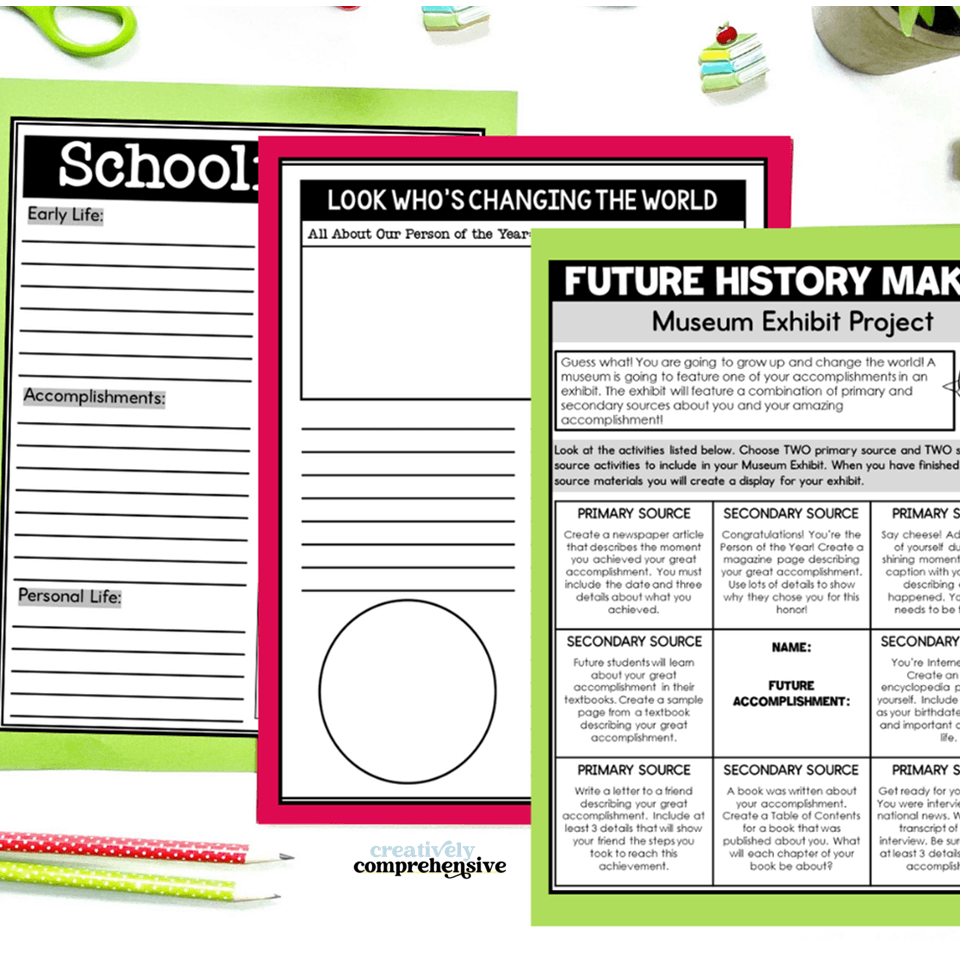
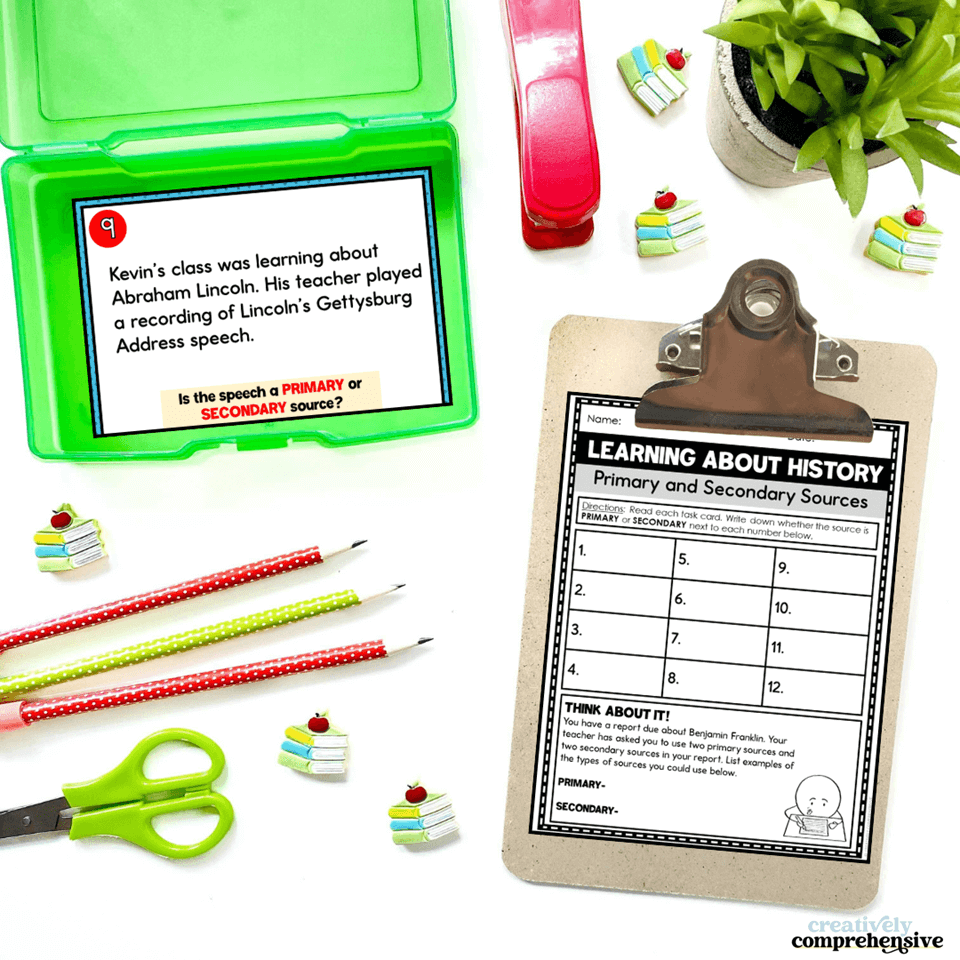
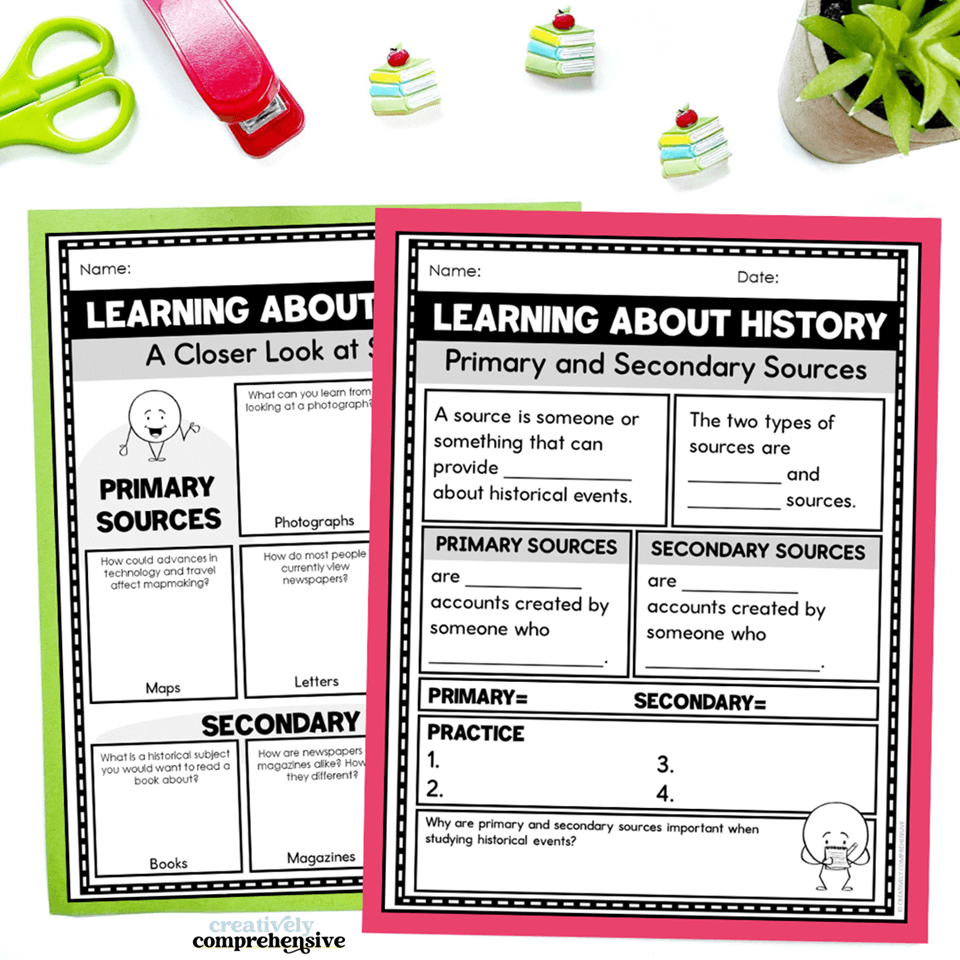
Top Activities Included in the Unit
If you’re looking for ideas to bring your lessons to life, here’s a glimpse of what’s included in this comprehensive unit for teaching primary and secondary sources:
- Sorting Activity: Students cut and sort examples into “primary” and “secondary” categories, reinforcing the difference between primary and secondary sources in a hands-on way.
- Task Cards: Perfect for small groups or centers, these cards present scenarios where students must decide whether a source is primary or secondary.
- Anchor Charts and Visuals: The primary and secondary sources anchor chart is ideal for displaying in your classroom, serving as a quick reference tool during discussions and activities.
- Assessment Questions: Scenario-based questions challenge students to explain their reasoning, solidifying their understanding.
- Final Project: Students apply their knowledge by creating a museum exhibit featuring “primary” and “secondary” sources about their imagined future accomplishments.
These activities go beyond rote memorization—they encourage critical thinking and real-world application.
Teacher Testimonials: What Do Real Teachers Say?
Here’s a few reviews from teachers who have effectively used this resource to teach primary and secondary sources effectively:
- “Wonderful resource. Easy to use guided notes. Love the examples. Made teaching this concept easier to my 5th graders. We are starting the year by looking at credible sources and primary/secondary sources so that way they can conduct research for all their projects this year easier. Loved that we could cover in a week and they can keep the notes to reference back to. Thanks so much.”
- “I did a lesson on primary and secondary resources that did not hit with the students. I found this resource and used it for a redo lesson and it couldn’t have gone better! I love the opportunities for students to share out and dig deeper into their thinking. The format and language was very engaging and appropriate and my students now have a grasp on the topic.”
- “We always begin our social studies curriculum talking about primary and secondary sources. This resource made it easy for me to teach, easy for students to take notes, and easy for me to assess learning. I used the task cards as practice and an assessment of learning. Best resource for primary and secondary sources out there!”
Transform Your Approach to Teaching Primary and Secondary Sources Effectively
If you’ve been searching for a way to make teaching primary and secondary sources more engaging, meaningful, and easy to implement, this unit is the solution you need. With its mix of interactive activities, real-world examples, and standards-aligned lessons, it ensures your students not only understand the difference between primary and secondary sources but also appreciate how they shape our understanding of history.
This resource saves you valuable planning time while delivering exceptional results in the classroom. Whether you’re focusing on examples of primary and secondary sources, using a primary and secondary sources activity, or creating an anchor chart to enhance learning, this unit has you covered. It’s perfect for grades 3-5 and flexible enough to suit any teaching style.
Ready to transform the way you teach primary and secondary sources? Click here to grab your copy today and watch your students thrive!

